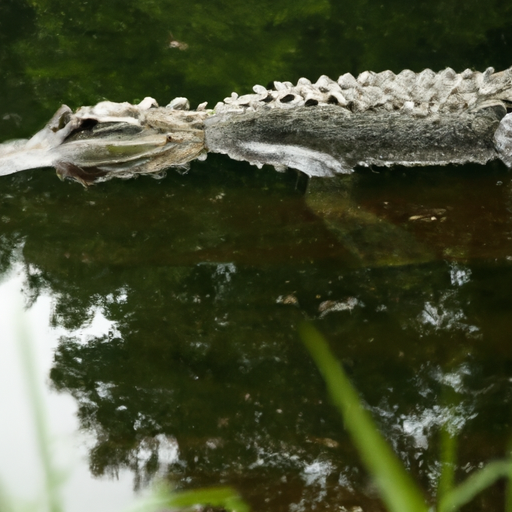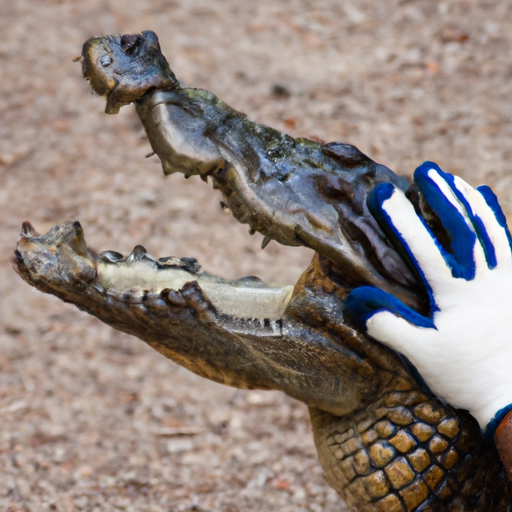Yes, the American alligator once faced near extinction due to hunting and habitat loss. Conservation efforts have successfully revived the population, making it a remarkable recovery story.
This iconic reptile, which faced the devastating threats of hunting and habitat loss, has defied the odds and bounced back from the brink of oblivion.
Key Takeaways:
- Alligators were on the verge of extinction due to hunting and habitat loss.
- Conservation efforts have successfully revived the alligator population.
- The shift in attitude towards conservation played a crucial role in saving alligators.
- Alligators are now coexisting with humans in many parts of the United States.
- Alligators play a vital role in the ecosystem and have specific breeding and life history patterns.
The Decline of Alligators
Alligators, once abundant in the United States, faced a significant decline in the early 20th century.
Their population was threatened by two primary factors: hunting for their valuable hides and the loss of their natural habitat.
During this time, alligator hides were in high demand for fashion and accessory industries, leading to extensive hunting.
As a result, the alligator population dwindled at an alarming rate. However, it wasn’t just hunting that posed a threat to these majestic creatures.
The draining of swamps and wetlands for agricultural purposes and urban development also played a significant role in the decline of the alligator population.
These actions dramatically reduced suitable habitats for alligators, leaving them with limited areas to live and reproduce.
The combination of excessive hunting and habitat loss pushed alligators to the brink of extinction.
These once thriving creatures were facing a critical endangerment crisis, requiring urgent action to save them from complete annihilation.
Shift in Attitude Towards Conservation
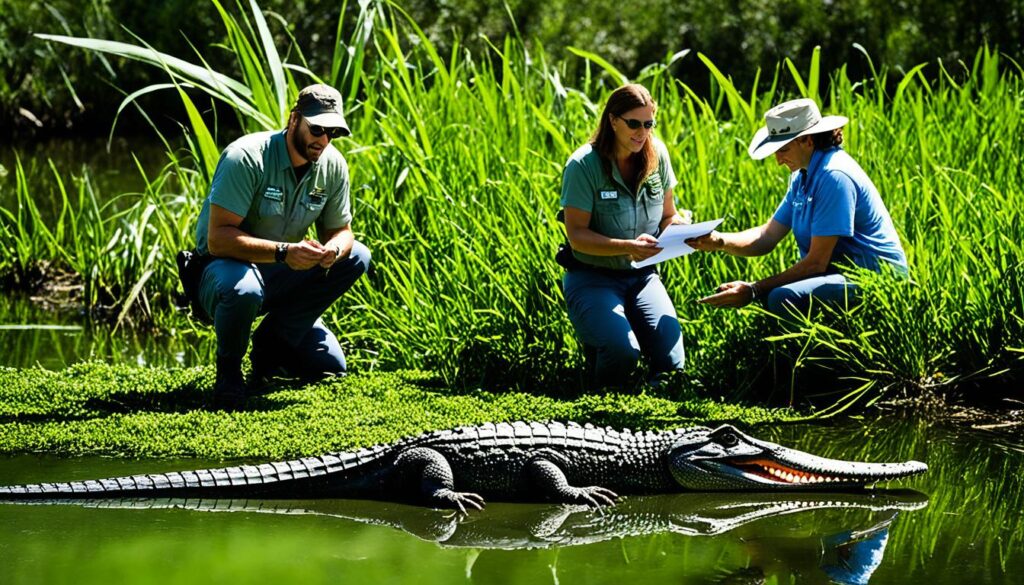
In the 1960s, there was a remarkable shift in public attitude towards wildlife conservation.
Lawmakers recognized the urgent need to protect endangered species and took significant steps to ensure their survival.
Alligators, once heavily hunted and facing habitat destruction, became a focal point for conservation efforts.
Recognizing the critical role that alligators play in maintaining the ecological balance of wetland ecosystems, lawmakers implemented robust protective measures.
These measures aimed to put an end to unregulated hunting and provide a safe environment for alligators to thrive.
In 1967, the alligator was officially labeled as an endangered species, granting it federal protection.
This designation marked a turning point in alligator conservation efforts and set the stage for their remarkable recovery.
With the implementation of protective measures, alligators were given a fighting chance to rebuild their populations and reclaim their rightful place in their natural habitats.
The Endangered Species Act
One of the pivotal moments in alligator conservation was the introduction of the Endangered Species Act.
This legislation provided a comprehensive framework for the protection and recovery of endangered species, including alligators.
Under this act, the federal government had the authority to regulate hunting and implement conservation strategies to ensure the survival of at-risk species.
Wetland Conservation
In addition to the legal protections provided by the Endangered Species Act, a focus on wetland conservation became crucial for alligator protection.
Wetlands are essential habitats for alligators, providing critical resources and a safe haven for breeding and nesting.
Efforts to restore and protect wetland areas went hand in hand with alligator conservation, creating a more sustainable environment for these majestic creatures.
The combined efforts of lawmakers, conservation organizations, and concerned citizens have led to significant strides in alligator conservation.
The progress made in protecting and preserving alligators showcases the power of collective action and highlights the importance of proactive measures in safeguarding endangered species.
Next, we’ll explore the impact of these conservation efforts and the subsequent recovery of alligator populations, demonstrating how determined action can lead to remarkable results.
Conservation Success and Population Recovery
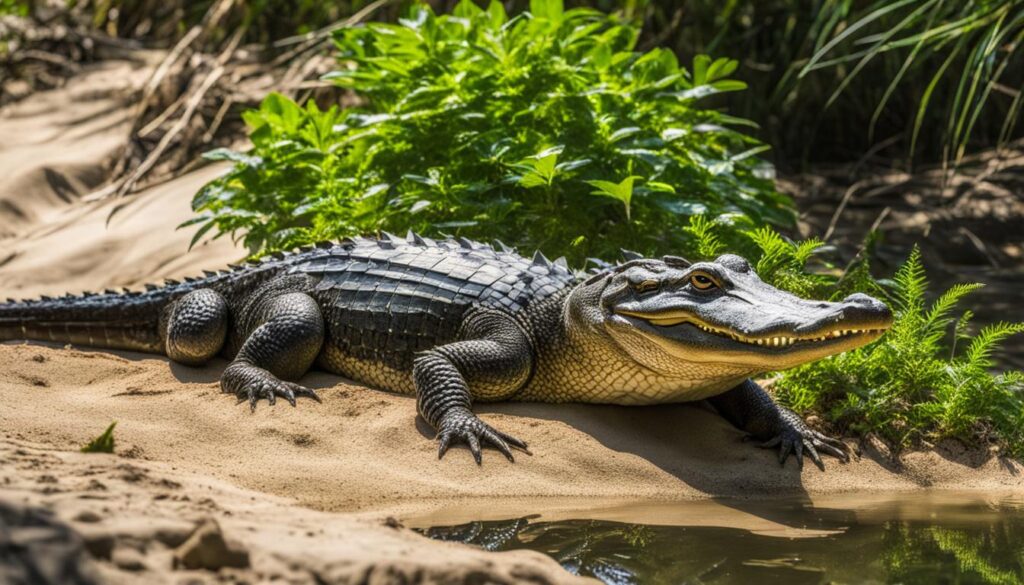
The near extinction of the American alligator due to hunting and habitat loss prompted extensive conservation efforts by federal and state agencies.
As a result, the alligator population experienced a remarkable recovery by the late 1980s.
Through strategic conservation initiatives and dedicated habitat management, the alligator population rebounded significantly.
These efforts led to the removal of the American alligator from the endangered species list, showcasing the effectiveness of conservation practices in preserving wildlife.
The recovery of the alligator population is a testament to the power of conservation efforts and the commitment of agencies and conservationists to protect and restore endangered species.
Ongoing conservation efforts continue to ensure the long-term stability and growth of the alligator population, fostering a harmonious relationship between these magnificent creatures and their natural habitats.
By leveraging scientific research, public awareness campaigns, and conservation programs, alligator conservation remains a top priority for wildlife management agencies.
These collaborative efforts underscore the commitment to preserving the biodiversity and ecological balance of wetland ecosystems, where alligators play a crucial role.
Through the collective dedication of all stakeholders, the American alligator population has made a remarkable recovery, exemplifying the potential for successful conservation of endangered species.
Building on this momentum, continued efforts are vital in ensuring the long-term viability and conservation of alligator populations for generations to come.
Alligators and Humans Coexist
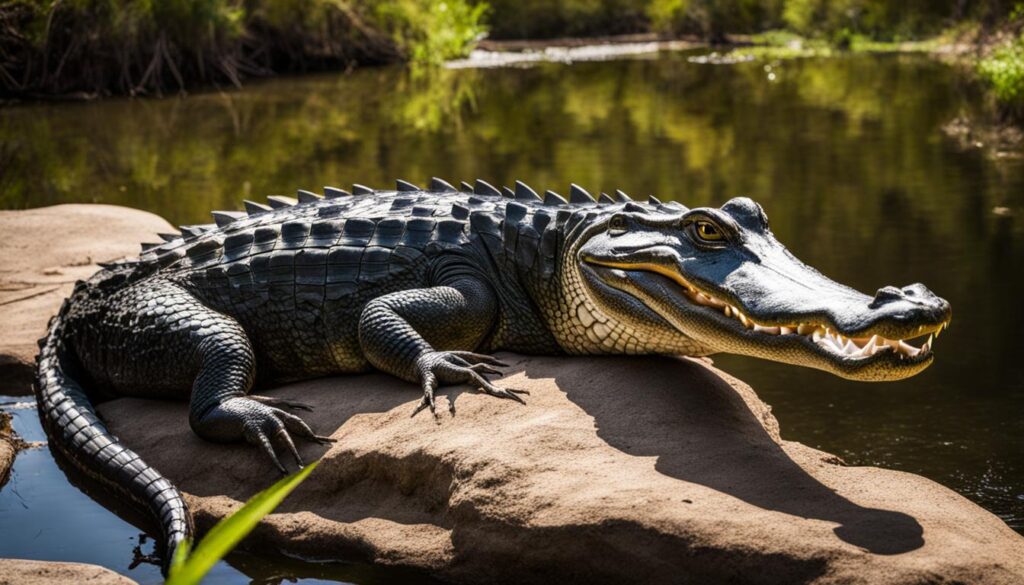
In many parts of the United States, including Texas, alligators and humans have found a way to coexist peacefully.
However, it is important to follow certain safety precautions to ensure a harmonious relationship between these two species.
Firstly, it is crucial to remember that alligators are wild animals and should never be approached or fed.
Feeding alligators can cause them to associate humans with food, leading to dangerous situations for both parties involved.
Therefore, it is essential to maintain a safe distance from alligators and observe them from afar.
Swimming in lakes or bodies of water known to have a large alligator population is not recommended.
While alligators are generally shy and less aggressive than crocodiles, it is better to err on the side of caution.
By avoiding swimming in these areas, you can minimize the risk of encountering an alligator.
Take a look at this image to get a glimpse of the captivating alligator species:
Remember, alligators play an important role in maintaining the balance of wetland ecosystems.
By respecting their space and following these safety tips, we can ensure the continued coexistence of alligators and humans while enjoying the natural beauty of our surroundings.
Characteristics and Diet of Alligators
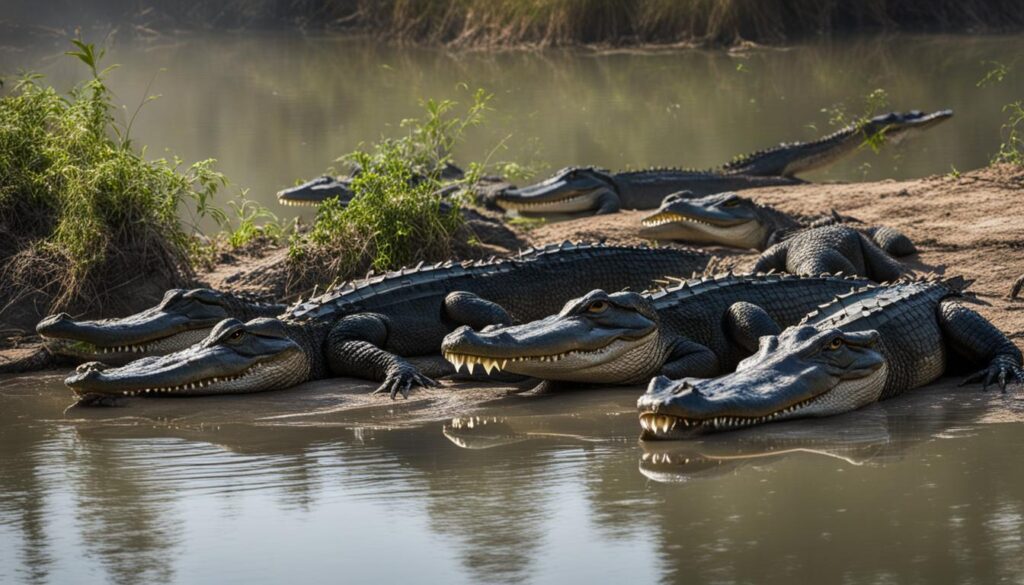
The American alligator, a member of the crocodile family, possesses unique characteristics that distinguish it from crocodiles.
Alligators have a distinct head shape and coloration, enabling easy differentiation between the two species.
With their large bodies, thick limbs, and powerful tails, alligators are well-adapted for swimming in their natural habitat.
Alligators primarily feed on fish, turtles, and snails, forming the core of their diet.
Their preference for aquatic prey is evident in their hunting behavior, where they patiently wait for unsuspecting animals to approach the water’s edge.
However, their diet is not limited to aquatic creatures alone. Alligators are opportunistic predators and will consume a variety of small animals that happen to venture near their watery domain.
Alligator Characteristics:
- Distinct head shape and coloration
- Large body with thick limbs and powerful tail
- Adapted for swimming
Alligator Diet:
- Fish
- Turtles
- Snails
- Various small animals
Alligators’ Role in the Ecosystem
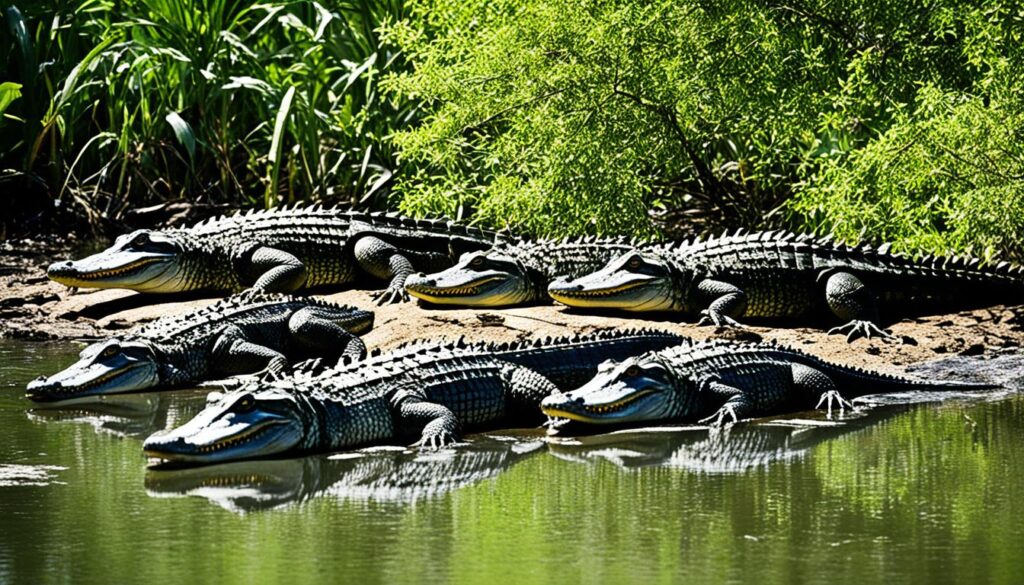
Alligators play a crucial role in wetland ecosystems, serving as important indicators of the overall health and vitality of these habitats.
As top predators, they help maintain balance within the ecosystem by controlling the populations of rodents and other animals that could damage marshland vegetation.
One of the significant contributions of alligators to the ecosystem is their creation of “gator holes.”
These are depressions in the ground that alligators dig with their powerful tails. Gator holes often fill with water, providing essential watering spots for various species, especially during dry seasons.
These water sources support the survival of a diverse range of organisms, including birds, fish, and reptiles, contributing to the overall biodiversity of the wetland.
Alligator habitat importance extends beyond their direct interactions within the ecosystem.
The marshes and wetlands inhabited by alligators also serve as essential carbon sinks, helping to mitigate climate change by sequestering carbon dioxide.
Additionally, these habitats help filter and purify water, improving water quality and providing clean drinking water for human and animal communities.
Alligators as Keystone Species
Alligators can be considered keystone species in wetland ecosystems. A keystone species is one that has a disproportionately large impact on its ecosystem relative to its abundance.
The removal or decline of a keystone species can have cascading effects on the entire ecosystem, leading to population declines in other species and negative ecological consequences.
Alligators’ role as apex predators helps regulate the population sizes of their prey, preventing overgrazing and promoting a diverse array of plant and animal species within the wetland.
Their presence also helps shape the physical structure of the habitat through burrowing activities and the creation of trails, which can lead to habitat heterogeneity and increased biodiversity.
The Value of Alligator Conservation
Protecting alligator populations and their habitats is of utmost importance to maintain the ecological integrity of wetland ecosystems.
By safeguarding the habitats and populations of alligators, we ensure the continued functioning of these unique and valuable ecosystems.
Alligator conservation efforts not only protect the species itself but also create ripple effects that positively impact other organisms and the overall health of the habitats they occupy.
By promoting and supporting alligator conservation, we contribute to the preservation of wetland biodiversity, the stability of natural cycles, and the provision of vital ecosystem services.
In summary, alligators are more than just fascinating reptiles; they are essential contributors to the delicate balance of wetland ecosystems.
Through their ecological role as predators and habitat engineers, alligators play a crucial part in maintaining the health and vitality of these valuable habitats.
Protecting and preserving alligator populations is not only crucial for their species but also for the overall health and resilience of our natural environment.
Breeding and Life History of Alligators
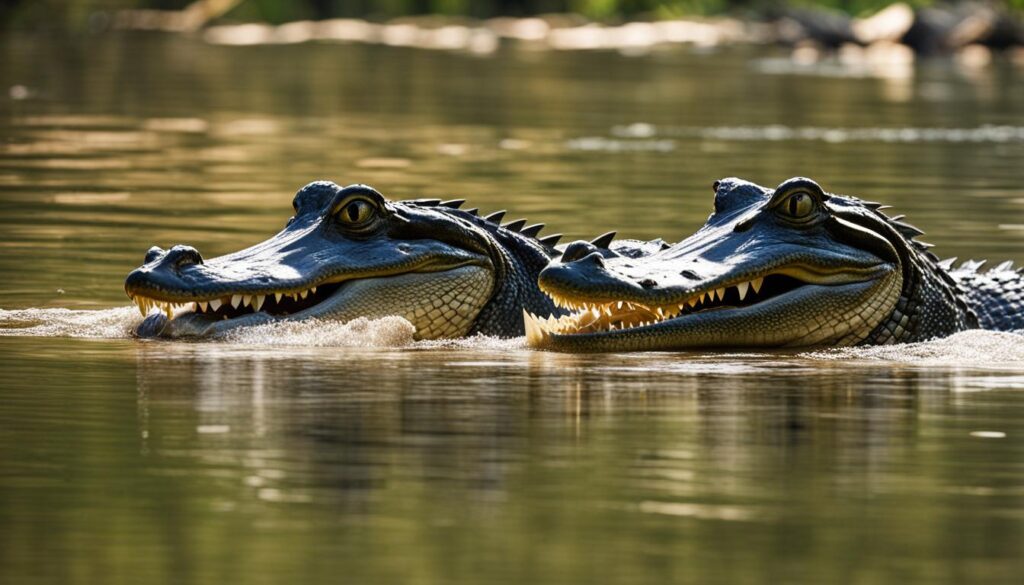
Alligators are fascinating creatures with a unique life history that plays a vital role in their breeding and survival.
Let’s delve into the intricacies of their reproductive behavior and life cycle.
Breeding Maturity
Alligators typically reach breeding maturity between the ages of 8 to 13 years. At this stage, they are capable of reproducing and continuing the life cycle of their species.
Nesting and Egg Development
When it comes to reproduction, female alligators take the lead. They construct nests, usually made of vegetation and mud, where they lay their eggs.
These carefully built nests protect the precious cargo within.
Parental Protection
Once the eggs are laid, the female alligator assumes the role of a protective parent. She guards the nest, ensuring the eggs remain safe until they hatch.
This dedication highlights the nurturing instincts of these remarkable creatures.
Birth and Survival
After an incubation period of approximately 65 days, the alligator eggs hatch. The young alligators, known as hatchlings, then make their way to the water.
Though vulnerable at this stage, they have a strong instinct for survival and are equipped with natural swimming abilities to navigate their surroundings.
Lifespan and Legacy
Alligators can live up to 30 years or more, provided they encounter favorable conditions and avoid threats.
Throughout their lives, they contribute to the ecosystem and continue the grand tapestry of alligator life history.
Understanding the breeding and life history of alligators gives us a deeper appreciation for their resilience and the importance of conservation efforts to protect these incredible creatures for generations to come.
Endangered Species Success Story
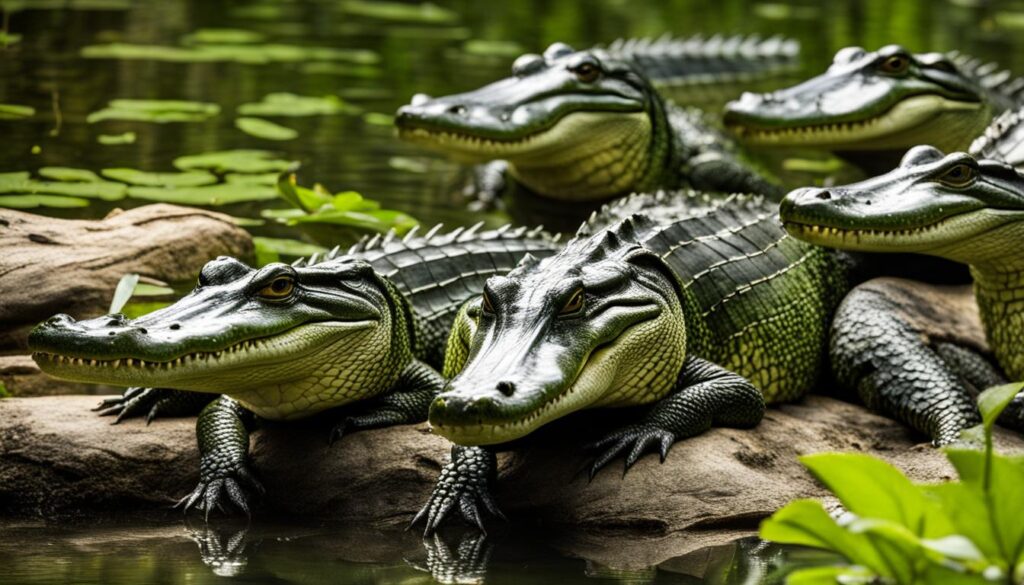
The recovery of the American alligator is a shining example of success in endangered species conservation.
Thanks to the focused efforts of the U.S. Fish and Wildlife Service and state wildlife agencies, this magnificent species has been saved from the brink of extinction.
In recognition of its remarkable rebound, the American alligator was declared fully recovered and removed from the endangered species list in 1987.
Throughout the decades of conservation work, numerous measures were implemented to protect and restore the alligator population.
These included habitat preservation, strict hunting regulations, and public awareness campaigns.
The tireless dedication of conservationists, scientists, and local communities played a pivotal role in safeguarding the future of this iconic reptile.
The success story of the American alligator serves as a testament to the effectiveness of concerted conservation efforts.
By prioritizing the preservation of critical habitats and implementing stringent protection measures, we have not only saved a species from extinction but also ensured the continued ecological balance of wetland ecosystems.
Today, the thriving population of American alligators stands as a symbol of hope and inspiration for other endangered species.
The lessons learned from their conservation journey provide valuable insights into the importance of proactive conservation measures and collaborative efforts to protect our planet’s biodiversity.
A New Generation of Alligators
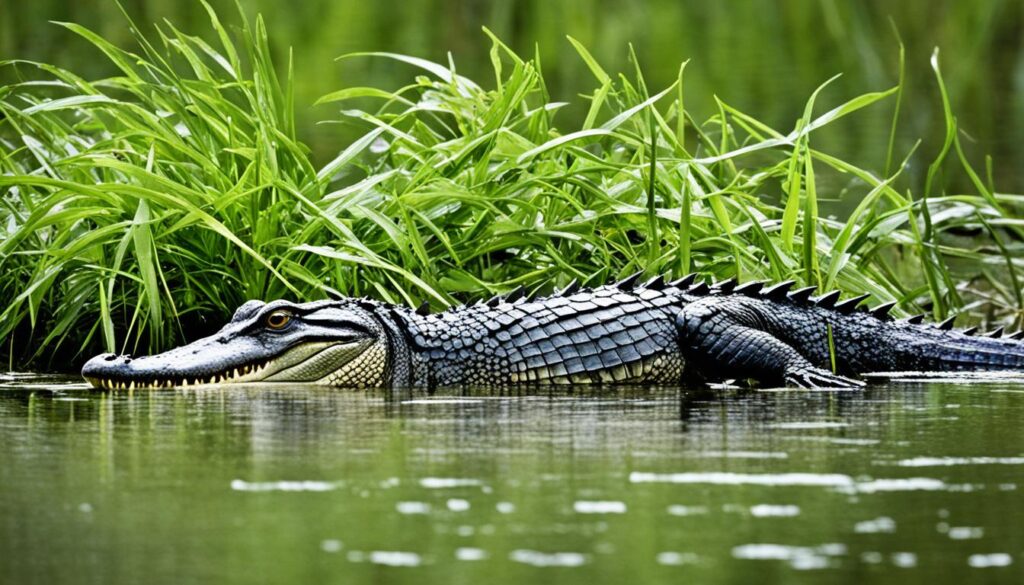
The alligator population has experienced remarkable growth, leading to the emergence of a new generation of alligators that are larger and more robust than ever before.
Experts are speculating that the extended protection measures put in place have contributed to this population explosion, creating what some refer to as “super gators.”
In certain areas, alligators have become so abundant that they are now considered a nuisance and can be legally killed.
This abundance is a testament to the success of conservation efforts, as it demonstrates the effectiveness of protecting and restoring the alligator population.
While the increase in alligator numbers is encouraging, it also presents challenges in managing their interactions with humans.
As the alligator population continues to expand, it is important for individuals to remain cautious and follow proper safety guidelines.
To illustrate the growth and significance of the alligator population, take a look at this image:
The image above showcases the thriving alligator population, highlighting the impact of conservation efforts and the potential for the development of larger alligators.
This remarkable growth is a testament to the success of conservation programs and the resilience of these incredible reptiles.
Alligator Conservation Today
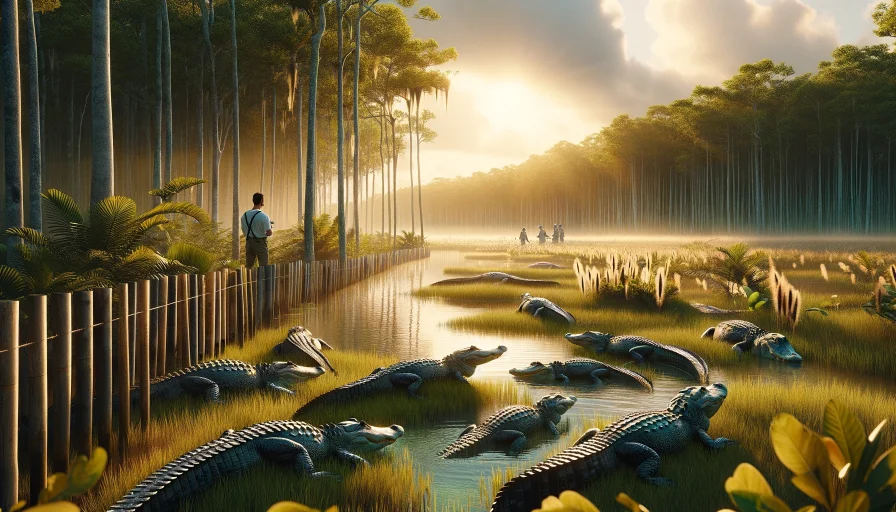
Despite the rebound in alligator populations, the Federal Government still classifies them as either endangered or threatened.
This classification reflects the continued efforts to protect and conserve these incredible creatures.
Alligator conservation efforts focus on population management and ensuring the long-term survival of this iconic species.
Conservation programs are implemented to monitor and control alligator populations in different regions.
These programs aim to strike a balance between maintaining healthy alligator populations and addressing any potential conflicts between alligators and humans.
By carefully managing alligator numbers, experts can mitigate the risks associated with alligator-human interactions, ensuring the safety of both humans and alligators.
Additionally, limited trading in alligator products helps support conservation efforts. This practice ensures that alligator populations are not exploited for commercial purposes.
The controlled trading of alligator products, such as skins and meat, allows for sustainable use while minimizing the negative impacts on alligator populations.
Some states have even considered removing alligators from the federal endangered species list.
This move reflects the success of conservation efforts and the positive impact they have had on alligator populations.
However, any such decisions must be carefully considered, taking into account the potential consequences and ensuring that adequate measures are in place to continue protecting alligators and their habitats.
The Importance of Alligator Population Management
- ✅ Conservation efforts help maintain a balance in ecosystems by managing alligator populations.
- ✅ Proper population management ensures the ecological health of wetland habitats.
- ✅ Alligator conservation plays a vital role in preserving biodiversity and the overall health of the ecosystem.
- ✅ By managing alligator populations, conservationists can prevent overpopulation and its potential negative effects on other species.
Conclusion
The near extinction and subsequent recovery of the American alligator is a testament to the power of conservation efforts.
Through protective measures, habitat management, and public awareness, alligators have made a remarkable comeback and continue to thrive in many parts of the United States.
In the early 20th century, alligators faced significant threats from hunting for their hides and the loss of their natural habitat due to agriculture and development.
However, a shift in attitude towards wildlife conservation in the 1960s marked a turning point.
Lawmakers implemented protective measures and labeled the alligator as an endangered species, providing federal protection and setting the stage for their recovery.
Thanks to these conservation efforts, the alligator population began to rebound in the late 1980s, eventually leading to their removal from the endangered species list.
Ongoing conservation initiatives and habitat management have ensured the stability and growth of alligator populations.
Alligators now coexist with humans in many parts of the United States, including Texas.
While alligators are generally shy and less aggressive than crocodiles, it is important for both humans and alligators to maintain their safety.
Following guidelines such as avoiding feeding alligators and keeping a safe distance are essential for peaceful coexistence.
Frequently Asked Questions
Q: Why did alligators almost go extinct?
A: Alligators almost went extinct due to excessive hunting and habitat loss. They were hunted extensively for their hides in the 19th and 20th centuries, leading to a significant decline in their population.
Q: Did alligators used to be endangered?
A: Yes, alligators were once listed as an endangered species due to overhunting and loss of habitat. Conservation efforts, including legal protection and habitat restoration, have significantly improved their populations.
Q: Are alligators declining?
A: Currently, alligator populations are stable and not considered to be declining. Conservation measures have been effective in preserving and increasing their numbers in the wild.
Q: Are alligators protected in Louisiana?
A: Yes, alligators are protected in Louisiana. The state has implemented successful management programs that regulate hunting and farming to ensure the species’ long-term survival.
Q: Are alligators endangered in Florida?
A: Alligators are not currently endangered in Florida. They are classified as a species of least concern due to successful conservation efforts that have stabilized their population.
Q: How many alligators exist?
A: While an exact global number is difficult to pinpoint, but it is estimated that there are 5 million American alligators spread out across the southeastern United States.



